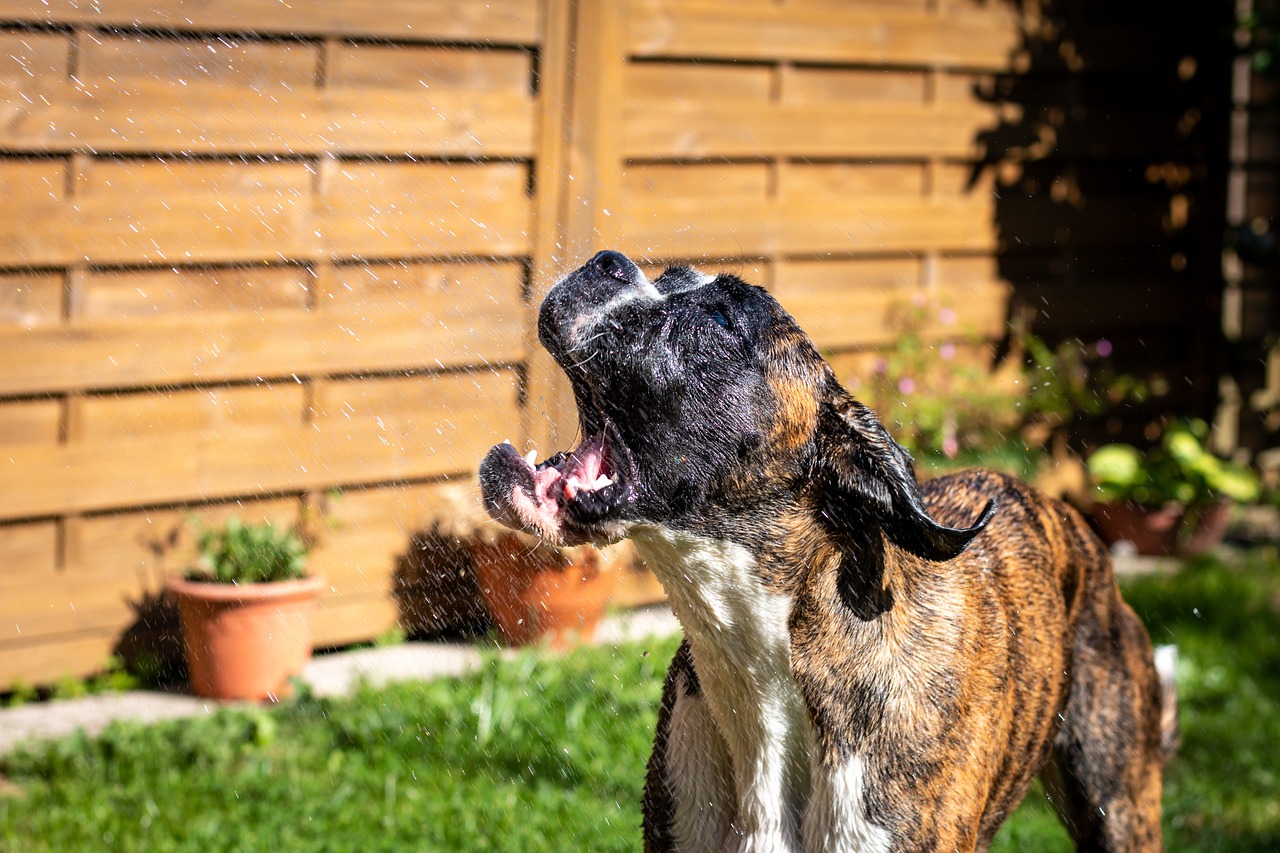Boxers, with their boundless energy, playful nature, and distinctive appearance, are a breed that brings joy and liveliness to any home. Originating from Germany, these medium-sized dogs are part of the working group and were initially bred for hunting, bull-baiting, and as guard dogs. Over time, Boxers have become beloved family pets, known for their loyalty, intelligence, and protective instincts. Alongside these admirable traits, Boxers exhibit a variety of unusual habits that can be both amusing and perplexing. These habits often stem from their high energy levels and strong working heritage, influencing their behavior in unique ways. Understanding these peculiarities is crucial for any Boxer owner, as it can aid in providing proper care and training. This article explores seven of the most unusual habits of Boxers, shedding light on why this charismatic breed behaves the way it does.

1. “Kidney Beaning” Dance
One of the most endearing and unusual habits of Boxers is their “kidney beaning” dance, where they twist their bodies into a semi-circle and wag their tails rapidly while moving in a circular motion. This peculiar behavior is a sign of extreme happiness and excitement, often exhibited when they greet their owners or when they’re particularly excited about an activity. The name derives from the shape they make, reminiscent of a kidney bean. This dance highlights the Boxer’s joyful and enthusiastic personality, and it’s a behavior that can bring laughter and delight to any observer. Encouraging this positive expression of happiness in a safe environment can strengthen the bond between a Boxer and its owner.
2. Leaning on People
Boxers are known for their affectionate nature, and one of their more unusual ways of showing affection is by leaning on their human companions. They might lean against your legs or sit on your feet, seeking physical contact and comfort. This habit stems from their desire for closeness and reassurance from their owners, reinforcing their bond. While charming, this behavior can be a bit overwhelming due to their size and strength, especially for young children or elderly people. Training to manage this behavior and teaching them appropriate ways to seek affection can ensure that their loving nature doesn’t become problematic.
3. Snoring Loudly
Boxers are prone to snoring quite loudly, a habit that can be attributed to their brachycephalic (short-nosed) facial structure. This physical trait makes them more likely to snore or grunt even when they’re awake. The snoring is generally harmless but can sometimes indicate breathing issues, especially in overweight dogs or those with overly exaggerated facial features. Keeping Boxers at a healthy weight and monitoring their breathing can help minimize any potential health risks associated with their snoring.
4. “Boxing” with Front Paws
True to their name, Boxers have a unique habit of using their front paws in a motion that resembles boxing. This behavior is often seen during play and is a way for them to interact with their environment and the creatures in it. Initially bred to hunt and trap prey, this behavior could be an adaptation of their instinct to use their paws to bat at and hold down objects or animals. Encouraging safe play and providing appropriate outlets for this behavior, such as interactive toys or play sessions, can help satisfy their natural instincts in a positive way.
5. Excessive Drooling
Boxers are also known for their excessive drooling, especially around meal times or when they smell tasty food. This drooling can be a bit messy but is a normal part of their physiology. The drooling increases not only due to the anticipation of food but also because of their facial structure, which makes it difficult to keep saliva contained. Owners can manage this by keeping wipes handy during meals and ensuring their feeding area is easy to clean.
6. Sudden Bursts of High Energy
Despite their sometimes calm demeanor, Boxers are prone to sudden bursts of high energy, often referred to as “zoomies” or frantic random activity periods. These bursts can see them running at high speeds around the house or yard, turning sharply, and generally displaying a wild bout of energy. This behavior is a healthy release of pent-up energy and should be seen as a normal and necessary part of their exercise routine. Regular physical activity and playtime are essential to keep these bursts of energy positive and constructive.
7. Chewing Habits
Boxers, especially as puppies, have a strong urge to chew. This can lead to the destruction of household items if not managed properly. This chewing habit is partly due to teething as puppies, but it also persists into adulthood as a way to explore their environment and keep their jaws strong. Providing a variety of chew toys and bones can help direct this natural behavior to appropriate items, preventing damage to household objects and ensuring the Boxer’s teeth and gums remain healthy.
Boxers are a delightful breed, full of quirks and personality traits that make them unique companions. Their unusual habits, from the “kidney beaning” dance to their chewing tendencies, are reflections of their heritage and vibrant character. Understanding and embracing these behaviors can greatly enhance the relationship between Boxers and their owners, ensuring these energetic and loving dogs live fulfilling and happy lives.
 Toledo, United States.
Toledo, United States.